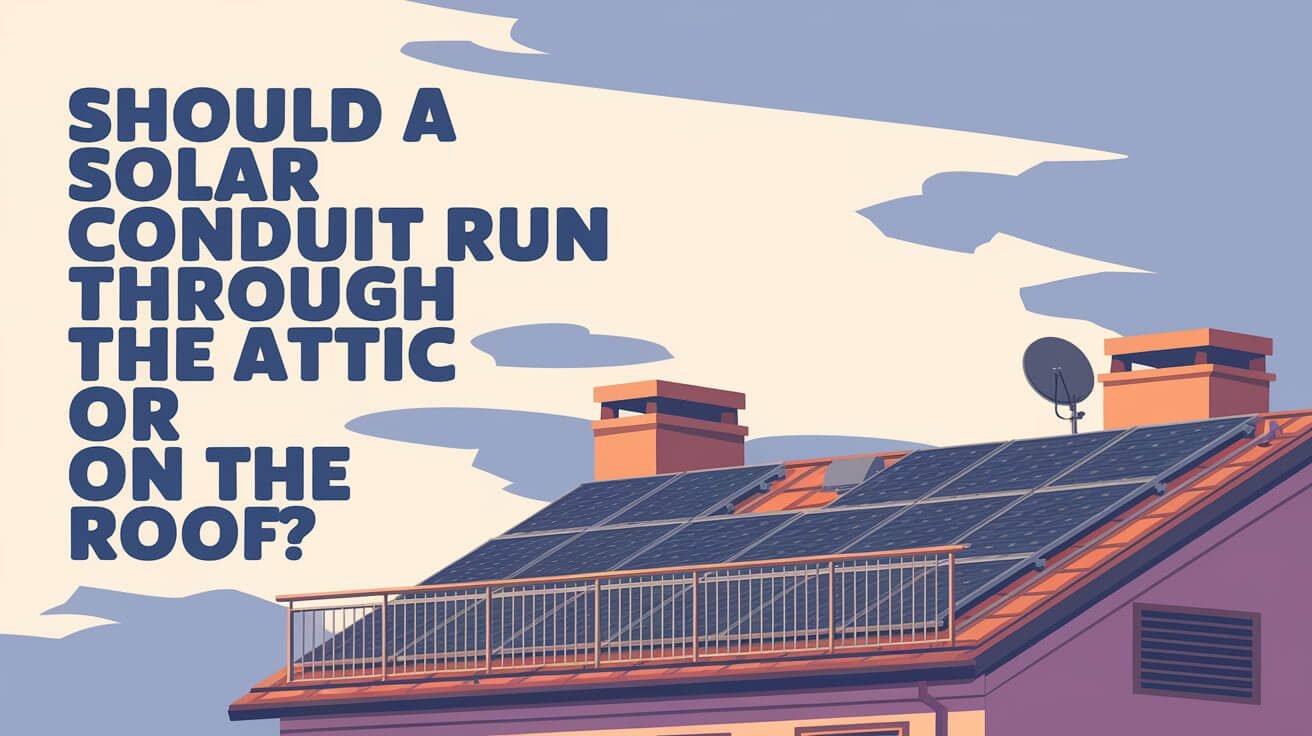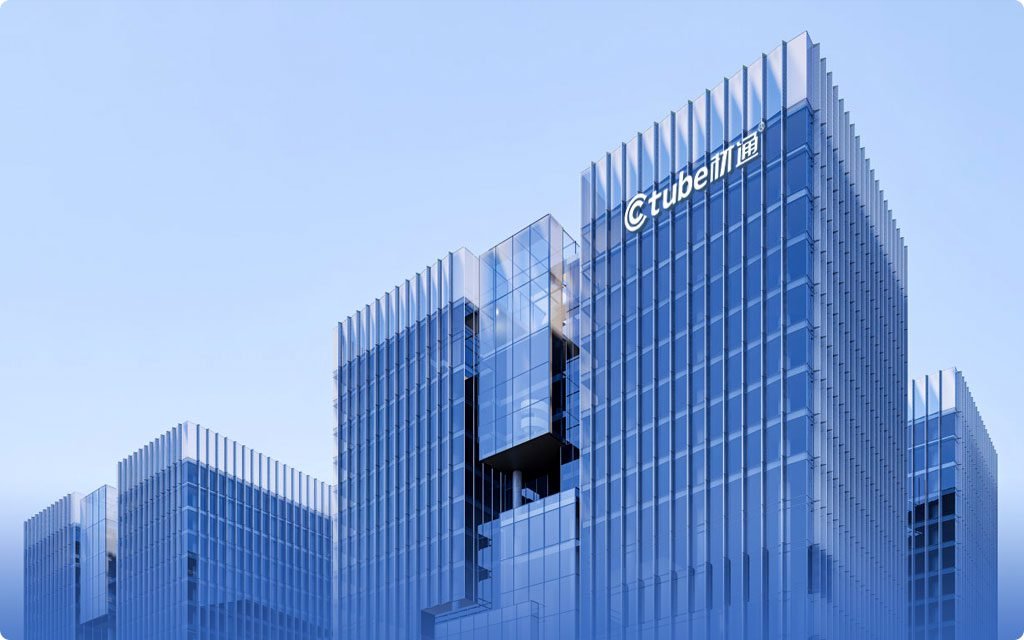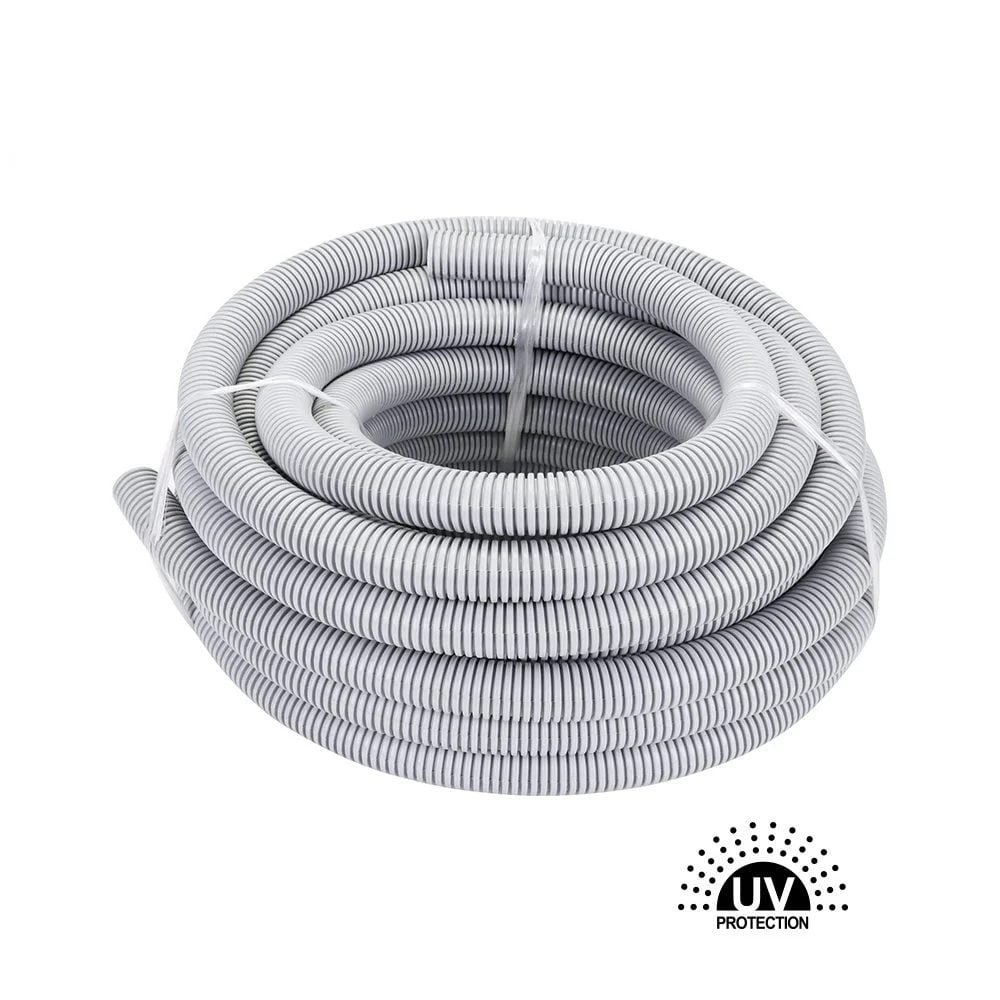Table of Contents
Toggle1. Introduce
When installing a solar energy system, one of the crucial decisions to make is how to route the electrical conduit that carries power from the solar panels to the rest of your home or building. The location of this conduit—whether through the attic or along the roof—can significantly impact the system’s performance, aesthetics, and long-term durability.
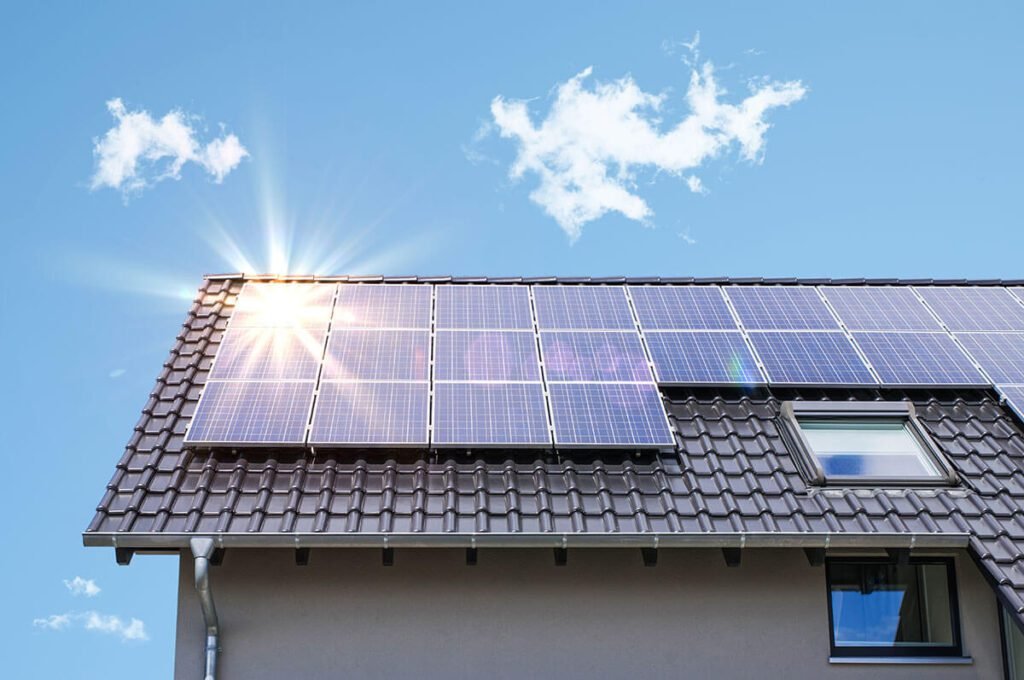
This article explores the pros and cons of each installation method to help you make an informed decision. By understanding these factors, you’ll be better equipped to choose the right option based on your unique needs and the specifics of your solar energy project.
2. What Is Solar Conduit and Why Does It Matter?
2.1 Definition of Solar Conduit
Solar conduit is an essential component of a solar power system. It refers to the protective tube or casing used to house electrical wiring running between the solar panels, inverter, and other components of the system. The conduit serves the crucial purpose of shielding wires from potential damage, environmental elements, and safety hazards.
Wiring in a solar system typically includes both DC (Direct Current) wiring, which carries the electricity from the solar panels to the inverter, and AC (Alternating Current) wiring, which transmits electricity from the inverter to the grid or the home’s electrical system.
2.2 Importance of Solar Conduit
2.2.1 Electrical Safety
Electrical safety is a fundamental reason why solar conduit is essential. When wires are exposed without protective conduit, they are at risk of damage from external elements or physical stress. A damaged wire can easily lead to electrical faults, including short circuits, sparking, or electrical fires. Proper conduit ensures that the wires are fully enclosed, reducing these risks.

For example, DC wiring, which often carries higher voltages than AC wiring, can pose significant electrical hazards if not adequately protected. If DC wires were to become exposed due to a lack of conduit, they could become dangerous, especially during maintenance or when subjected to environmental wear.
2.2.2 Durability and Protection from the Elements
A solar system’s wiring can be exposed to harsh weather conditions like high temperatures, UV radiation, rain, and snow. The right conduit material ensures the wiring remains intact and safe in such conditions. For instance, UPVC conduits have better function to resist UV radiation, which prevents the conduit from becoming brittle or degrading when exposed to the sun for extended periods.
Similarly, metal conduits like EMT or RMC are designed to withstand physical impact, which is especially useful when the system is placed in areas exposed to foot traffic or debris.
2.2.3 Compliance with Electrical Codes
Solar systems must comply with national and international electrical codes, such as the National Electrical Code (NEC) in the U.S. or similar standards worldwide. These codes outline specific guidelines for the safe and proper installation of solar systems, including conduit use. Non-compliance could lead to serious consequences such as system failures, voided warranties, or issues with insurance coverage.
For example, the NEC specifies that DC wiring should be installed in approved conduit for safety reasons, to reduce the risk of electrical fires and ensure the longevity of the solar system. Properly selecting and installing conduit is not only about meeting these regulations but also about protecting the people and property that rely on the system.
2.2.4 Simplifying Maintenance and Upgrades
Having solar wiring in conduit makes it easier for installers to inspect, maintain, or upgrade the system. For example, if a wire becomes damaged or needs to be replaced, the conduit provides clear access, making repairs faster and more efficient. Additionally, the conduit can help ensure that the wires stay organized, making upgrades or additions to the solar system much simpler.
2.3 Types of Solar Conduit
There are various types of conduit materials used in solar installations, each with specific advantages and challenges. The most common conduit materials are:
2.3.1 UPVC Conduit
UPVC (Polyvinyl Chloride) conduit is one of the most popular materials for solar installations, particularly in residential settings.
- Advantages: UPVC is affordable, lightweight, and easy to install. It’s also a good insulator and is resistant to moisture, which makes it suitable for both indoor and outdoor use. The flexibility of UPVC allows for easy routing in areas with limited space, such as attics or walls.
- Limitations: While UPVC conduit is relatively durable, it is prone to cracking or becoming brittle if exposed to extreme temperature fluctuations or physical stress. It’s also not the best material for areas with high foot traffic or where physical damage is a concern.

2.3.2 Electrical Metallic Tubing (EMT)
EMT (Electrical Metallic Tubing) is a thin-walled, galvanized steel conduit that provides a higher degree of protection than PVC.
- Advantages: EMT is lightweight, flexible, and provides excellent protection against physical damage. It also offers electromagnetic interference (EMI) shielding, making it an ideal choice when wires are running near sensitive electronic equipment. EMT is easier to install than rigid metal conduits and provides a sleek, clean aesthetic.
- Limitations: While EMT is great for providing physical protection, it’s more prone to corrosion in wet environments unless it’s galvanized or treated with special coatings. It’s also more difficult to work with in terms of installation compared to PVC due to its rigidity.
2.3.3 Rigid Metal Conduit (RMC)
RMC (Rigid Metal Conduit) is a heavy-duty, galvanized steel conduit designed for environments where high protection against physical damage is necessary.
- Advantages: RMC offers the strongest protection of all conduit types. It is highly durable and corrosion-resistant, making it a preferred choice in harsh outdoor conditions or industrial installations. Rigid metal conduit can also be used to carry wires over long distances without losing its integrity.
- Limitations: RMC is more expensive and heavier compared to both PVC and EMT, and it can be difficult to install, particularly when tight bends are needed. It also requires special fittings and tools for installation, making it a less DIY-friendly option.
2.3.4 Flexible Conduit (Electrical nonmetallic tubing)
Flexible conduit allows for easy routing in tight or hard-to-reach areas.
- Advantages: Flexible conduit is easy to install in situations where rigid conduit would be challenging, such as when wiring needs to be routed around obstacles or corners. It’s great for connecting solar panels to junction boxes or in areas with a high degree of movement.
- Limitations: Flexible conduit does not provide the same level of protection as rigid conduit, especially in areas with significant risk of physical damage. It also requires more frequent inspection to ensure it remains intact and functional.
3. Running Solar Conduit Through the Attic
3.1 Introduction to Attic Conduit Installations
When installing a solar energy system, the routing of the electrical conduit plays a critical role in the system’s functionality, safety, and durability. Many homeowners and solar installers opt to run the solar conduit through the attic because it offers several advantages, such as protected wiring and hidden aesthetics. However, while this installation method can provide several benefits, it also requires careful planning and consideration of several factors, including temperature fluctuations, moisture concerns, and ease of access.

In this section, we’ll explore the benefits and potential drawbacks of attic conduit installations, providing insights into when and why you might choose this approach for your solar setup.
3.2 Advantages of Running Solar Conduit Through the Attic

3.2.1 Protection from Harsh Weather
One of the primary reasons why attic conduit installations are so popular is the protection from environmental elements. Conduit placed in the attic is shielded from direct exposure to weather conditions such as rain, snow, and UV radiation. Over time, UV rays from the sun can degrade the conduit material, especially for plastic conduits like PVC, which can become brittle and crack under prolonged UV exposure. By running the conduit inside the attic, the wiring is protected from both UV degradation and temperature fluctuations, which can extend the lifespan of the conduit and wiring.

Furthermore, protecting the conduit from extreme weather conditions reduces the risk of corrosion, especially for metal conduit types such as EMT (electrical metallic tubing) or RMC (rigid metal conduit), which can rust when exposed to rain or humidity.
3.2.2 Aesthetic Benefits
Another key advantage of running solar conduit through the attic is the aesthetic appeal it offers. By concealing the conduit within the attic, the system is less visible from the outside. This is particularly beneficial for homeowners who want to maintain a clean exterior look and avoid the “cluttered” appearance that conduit running along the roof can create. Conduit and wiring, when installed on the roof, are exposed to the elements and can detract from the visual appeal of the building. For those who prefer a sleek, integrated design, the attic provides an ideal space to house the wiring out of sight.

In addition to enhancing the appearance of the home, attic conduit installations can contribute to overall property value. The hidden installation can be perceived as a higher-quality, professionally executed solar system, appealing to potential buyers who prefer clean, neat installations.
3.2.3 Simplified Maintenance and Troubleshooting
One of the often-overlooked advantages of attic conduit installations is the ease of access for future maintenance. In the event that a problem arises with the solar system—such as a loose wire, faulty conduit, or even a need for system upgrades—it is generally easier to access the attic than to make repairs to conduit running along the roof.
Attic space is usually more controlled and dry, making it easier to identify and address wiring issues without dealing with rain or other external elements. Also, attic installations are less prone to damage from physical contact, such as being hit by tree branches or other debris. As a result, if maintenance or replacement of wiring or conduit is required, an attic installation can reduce the overall effort and time involved in making repairs.
3.3 Disadvantages of Running Solar Conduit Through the Attic
3.3.1 Temperature Extremes
Although the attic offers protection from direct weather elements, it is important to remember that temperature extremes in the attic can still present challenges. In the summer, attics can become extremely hot, with temperatures easily surpassing 100°F (38°C), and in the winter, they can drop below freezing. This can have several impacts on both the conduit material and the wires running inside.
- Conduit Material Sensitivity: For example, PVC conduit, while affordable and lightweight, can become brittle and prone to cracking at very low temperatures. At the same time, excessive heat can cause PVC to soften, potentially leading to sagging or deformation of the conduit. This reduces the protective qualities of the conduit and increases the risk of physical damage or exposure of the internal wires.
- Wiring Issues: Heat can also affect the insulation around the solar panel wiring. If the temperature in the attic reaches excessively high levels, the insulation can deteriorate, causing wires to become more vulnerable to wear or electrical shorts.
For this reason, it’s important to select conduit materials that are rated for both high and low-temperature ranges, or to include some form of attic insulation to stabilize the temperature and reduce the risks of damage from temperature fluctuations.
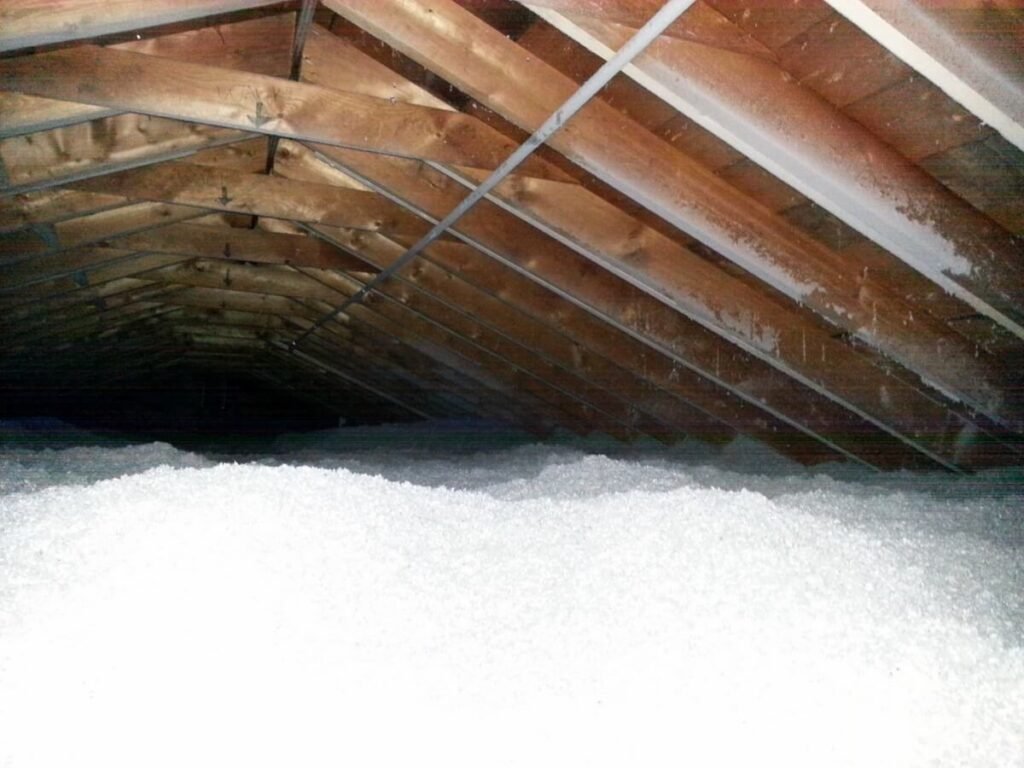
3.3.2 Moisture and Humidity Risks
Another challenge with attic conduit installations is the potential for moisture accumulation. Attics, particularly in regions with high humidity or those lacking proper ventilation, can become breeding grounds for condensation. When warm air from the living spaces below meets the cold air in the attic, moisture can form on the conduit, which may cause corrosion in metal conduits or degradation in non-metallic materials like PVC.
- Corrosion in Metal Conduit: Metal conduits, such as EMT or RMC, can rust if exposed to excess moisture. This corrosion can weaken the conduit, which may eventually lead to electrical hazards.
- Mold and Mildew: In more extreme cases, the excess moisture can cause mold and mildew to grow, which could damage the wiring insulation and compromise the safety of the system.
To prevent these issues, it is essential to maintain a well-ventilated attic and ensure proper moisture control. Additionally, installing vapor barriers or dehumidifiers can help prevent moisture buildup and protect the system.
3.3.3 Limited Access and Installation Challenges
Although attics offer many benefits, they can also pose significant challenges during the installation process. Many attics are cramped or have limited access, which can make running conduit difficult. For example, narrow aisles, low headroom, and the presence of insulation, ductwork, or other utilities can complicate conduit placement. These factors can lead to a slower installation process, requiring more time and labor.

- Physical Limitations: Installers often have to work in tight spaces or navigate around obstacles like beams or trusses. Additionally, the insulation in the attic may obstruct conduit paths, making it difficult to run wires properly.
- Safety Concerns: Working in attics can be challenging due to the risk of falling or getting injured by hidden nails, beams, or other debris. Installers must take precautions to ensure safety during the process.
To mitigate these challenges, it’s advisable to hire an experienced solar installer who is familiar with attic installations and can work around these limitations efficiently. It is also important to have a clear plan in place for how to navigate the attic space and where to run the conduit.
3.4 Best Practices for Installing Solar Conduit in the Attic
3.4.1 Choose the Right Conduit Material
The conduit material you choose plays a crucial role in the durability of the system. For attic installations, consider using weather-resistant materials that can handle the temperature extremes and humidity in the attic.
UPVC Conduit: Popular due to its cost-effectiveness and ease of installation, UPVC is suitable for dry attics, but extra care should be taken in areas prone to extreme cold or heat.
Metal Conduit: EMT or RMC is more durable and resistant to temperature extremes but requires more labor to install and may add costs to the overall system. Metal conduits are particularly beneficial in areas where the attic is exposed to high humidity levels.
3.4.2 Proper Insulation and Ventilation
Proper insulation and ventilation in the attic are critical to the performance and longevity of your conduit system. Insulation will help to keep the temperature stable, reducing the risk of temperature-related conduit damage. Similarly, good ventilation helps to prevent moisture from accumulating and causing corrosion or mold growth.
Ensure that the attic is properly ventilated with air vents at both high and low points to allow air circulation.
Use vapor barriers where necessary to minimize moisture buildup in particularly damp areas of the attic.
3.4.3 Labeling and Routing for Easy Access
To ensure the future accessibility of the conduit, make sure the installation path is clearly labeled and mapped. Installers should leave sufficient space around the conduit to make future repairs easier. Clear labels on the conduit will help identify the solar wiring when troubleshooting or performing upgrades.
While attics provide a hidden space for the conduit, they should also be planned for long-term accessibility. Leave room for easy future access in case repairs or upgrades are needed, especially if the attic becomes crowded with insulation or other utilities.
4. Running Solar Conduit on the Roof
4.1 Introduction to Roof Conduit Installations
Running solar conduit on the roof is a common method for connecting solar panels to the electrical system when attic space is limited, difficult to access, or unsuitable for conduit installation. This approach provides clear pathways for wires and makes the system more accessible for future maintenance.
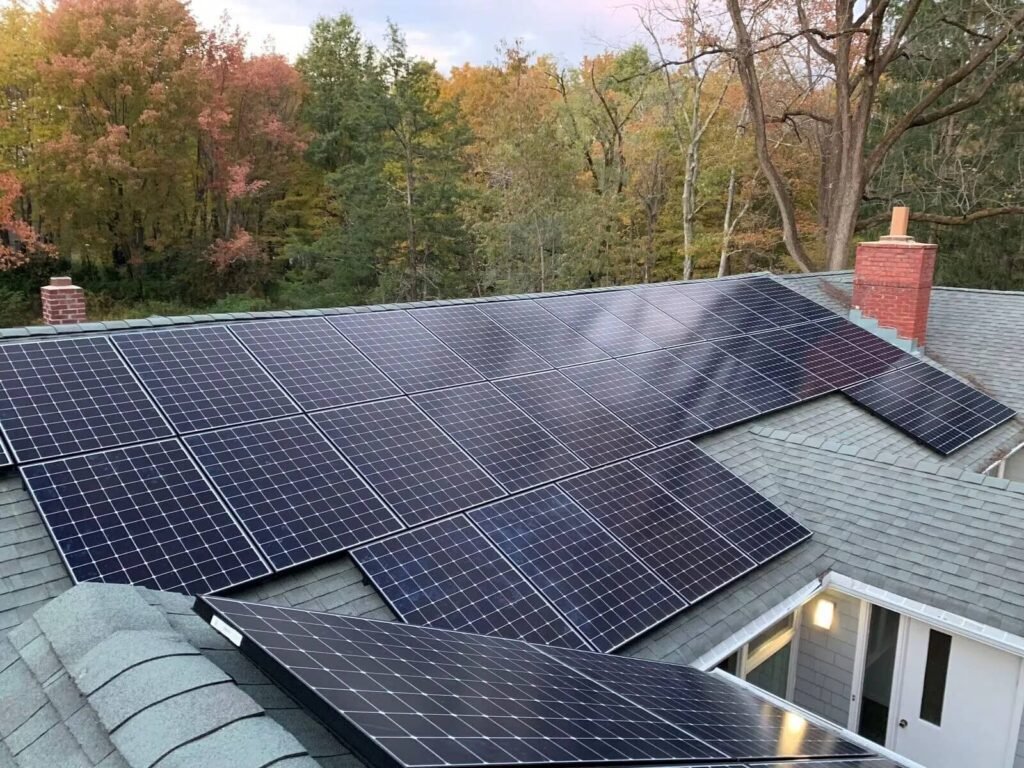
Unlike attic conduit runs, roof installations are visible and exposed to the elements, which brings its own set of benefits and challenges. In this section, we will dive deeper into the advantages and disadvantages of roof-mounted solar conduit, as well as the considerations you should keep in mind when deciding whether this method is right for your solar installation.
4.2 Advantages of Running Solar Conduit on the Roof
4.2.1 Easier Accessibility and Installation
One of the main benefits of roof-mounted conduit is the ease of access during installation. Roof conduit is exposed, which makes it simpler for installers to run, secure, and make adjustments during the installation process. Compared to attic installations, where space is limited and structural elements may obstruct wiring, roof-mounted conduit doesn’t require navigating tight, hard-to-reach spaces.
The speed of installation can also be faster due to this accessibility. Roof-mounted conduit is visible, so the installation crew can easily work on it without worrying about obstructions like insulation, beams, or existing wiring. This can help to reduce installation time and labor costs, especially for larger systems.
Additionally, future upgrades or repairs are much simpler with roof-mounted conduit. If a section of conduit needs to be repaired, upgraded, or replaced, it’s much easier to access and work on than conduit hidden in the attic or within walls.
4.2.3 Long-Term Durability and Protection
Exposed roof conduit is typically more durable because it is less likely to be physically damaged than attic conduit. Conduit in the attic is at risk of being accidentally bumped or crushed by moving materials or workers. Roof-mounted conduit, on the other hand, is usually fixed securely to the roof, reducing the chances of physical interference.
Roof-mounted conduit is also typically more resilient to weathering from environmental factors such as UV rays, rain, snow, and wind. High-quality conduit materials such as UV-resistant PVC or galvanized metal are designed to withstand these elements, ensuring that the system remains intact and functional over time.

4.3 Disadvantages of Running Solar Conduit on the Roof
4.3.1 Exposure to Weather and Environmental Conditions
One of the primary challenges of roof-mounted conduit is its exposure to the elements. Roof conduit must endure the full range of weather conditions—UV radiation, rain, snow, wind, and extreme temperatures—leading to potential wear and damage over time.
- UV Damage: Prolonged exposure to direct sunlight can cause plastic conduit to degrade, becoming brittle and cracked. This degradation can cause the conduit to lose its integrity, potentially leading to wiring damage or electrical failures.
- Temperature Extremes: Roof-mounted conduit can be exposed to temperature extremes that may cause expansion and contraction of the materials. This can increase the likelihood of cracks or breaks, which could compromise the conduit’s ability to safely carry electrical wiring.
To combat these risks, it’s essential to use weather-resistant conduit that is designed to withstand UV exposure and extreme temperatures. Metal conduits such as galvanized steel or aluminum offer higher durability compared to plastic conduits and may be a better option for installations in areas with extreme weather conditions.
4.3.2 Aesthetic Impact

Despite the ability to minimize visual disruption, roof-mounted conduit is still visible and could be a concern for homeowners focused on maintaining the aesthetic of their home. Some homeowners may find exposed conduit unattractive, especially if it is routed along a prominent section of the roof or if the conduit doesn’t match the color or design of the roofing material.
If the solar system is installed in a location that is highly visible from the street, the appearance of roof-mounted conduit could detract from the home’s curb appeal. However, with careful planning and by choosing high-quality materials, the conduit can be integrated into the overall design of the house, minimizing its impact.
4.3.3 Safety Concerns with Roof Access
Installing conduit on the roof introduces safety risks that must be taken into account. Working on a roof is inherently more dangerous than working in an attic or other interior spaces due to the height and potential for falls. Installers must use proper fall protection equipment and ensure that ladders, scaffolding, and roofs are secure to minimize the risk of accidents during installation.
Additionally, the presence of other roof components such as chimneys, skylights, and vents may complicate the installation process. Installers must take care not to obstruct these features while installing the conduit, which may require additional time and effort.
4.3.4 Increased Maintenance Efforts
While roof conduit is relatively easy to install, it can require more maintenance over time. Since it is exposed to environmental factors such as rain, snow, and wind, roof-mounted conduit may suffer from wear and tear faster than attic conduit.
- Corrosion: Metal conduit, even if coated, may corrode over time due to exposure to moisture.
- Debris Accumulation: Roof conduit can accumulate dirt, leaves, and other debris, which can obstruct airflow or cause the system to function less efficiently.
Routine inspections are necessary to check for any damage, cracks, or wear on the conduit. If any issues are found, repairs or replacements will need to be made promptly to prevent further damage.
4.4 Best Practices for Installing Solar Conduit on the Roof
4.4.1 Choose High-Quality Conduit Materials
To ensure that the conduit can withstand the elements and last for years, use high-quality materials designed for outdoor use. Conduit made from UV-resistant PVC or metal is recommended. When selecting materials, consider the climate conditions in your area to ensure durability.
For example, galvanized steel or aluminum metal conduit offers enhanced durability in harsh weather conditions, while UV-resistant plastic materials are suitable for more temperate climates. For areas with high humidity, consider corrosion-resistant conduit to minimize rust and degradation over time.
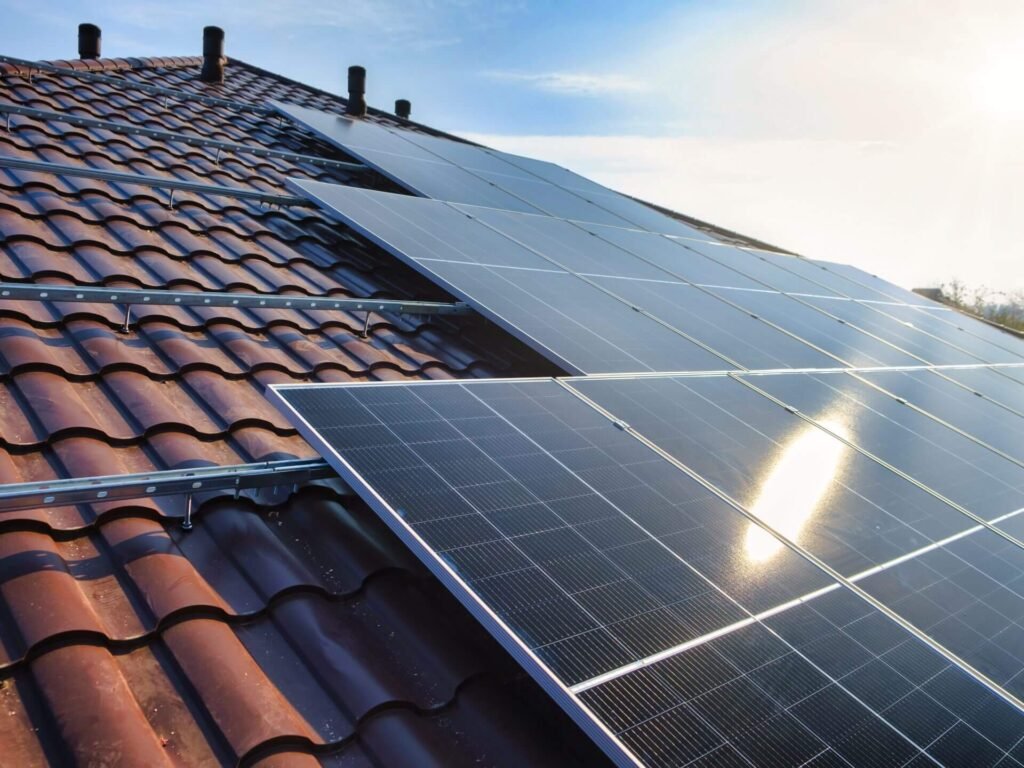
4.4.2 Ensure Proper Conduit Support and Mounting
Properly securing the conduit is essential for long-term performance. Use roof clips, brackets, or straps specifically designed for mounting conduit to the roof. The conduit should be firmly anchored to prevent movement, which could cause wear or damage to both the conduit and the roof.
It’s important to ensure that the conduit is straight and neat while still allowing for any necessary bends or turns. Avoid kinks in the conduit, which can strain the wiring inside and lead to potential electrical issues.
4.4.3 Perform Regular Maintenance and Inspections
Roof-mounted conduit should be inspected regularly for signs of wear and tear, particularly after storms or extreme weather events. Ensure that there are no cracks, corrosion, or other issues with the conduit, and clean it periodically to prevent the buildup of debris.
Maintaining the conduit will help ensure that the solar system operates at peak efficiency and will prolong the lifespan of the entire system.
5. Key Factors to Consider When Choosing Placement
Choosing where to run the solar conduit—whether through the attic or on the roof—requires careful thought about various key factors that will impact the long-term performance, safety, and maintenance of your solar energy system. Understanding these considerations is crucial to making an informed decision that best suits your specific needs, budget, and aesthetic preferences. Below, we’ll dive deeper into the most important factors to consider when deciding where to install the conduit.

5.1 Compliance with Local Codes and Regulations
Before proceeding with your solar conduit installation, it’s critical to ensure that the choice of placement complies with local building codes and electrical regulations. These guidelines are set by various regulatory bodies, including the National Electrical Code (NEC), to ensure safety and system performance.
5.1.1 NEC Guidelines for Conduit Placement
The NEC offers clear guidelines regarding conduit routing in both attic and roof installations. For instance, solar DC wiring must be routed through weatherproof conduit and must be secured to avoid damage. When conduit is run on the roof, it must be designed to resist UV degradation and extreme weather. Additionally, the conduit may need to be protected by covers or boxes to prevent accidental contact and physical damage. Conduit running through attics, however, is more sheltered, though it may still need to be supported and protected to meet NEC standards.
5.1.2 Local Building Codes and Permitting
Local codes may have specific provisions about how solar conduit can be installed in both the attic and on the roof. Some regions may mandate that electrical wiring in the attic be enclosed in fire-resistant materials or require additional fire safety measures. Additionally, some local authorities may impose requirements regarding the visibility of conduit, particularly for roof-mounted systems. Understanding these codes is essential to avoid fines or delays and ensure that your installation passes inspection.
5.2 Cost Considerations
When deciding whether to run solar conduit through the attic or on the roof, cost plays a crucial role in the decision-making process. Various factors, including material costs, labor complexity, safety measures, and future maintenance, can influence the overall price. Feedback from homeowners shows differing opinions regarding which installation method is more costly, and it’s important to weigh these views and prepare accordingly.
5.2.1 Installation Costs
Roof-Mounted Conduit: Roof-mounted conduit installations typically involve additional materials for weatherproofing and UV protection. You may also incur higher labor costs due to the use of ladders, scaffolding, or even cranes to access the roof. The conduit must be installed securely to prevent damage from harsh weather conditions, which may require extra tools and expertise.
Sealing and ensuring waterproofing of conduit connections also add to the overall price. That being said, roof conduit installations can sometimes be more straightforward because there’s more open space to work with, depending on the roof type and accessibility.
Attic-Mounted Conduit: Contrary to the general perception that attic conduit might be cheaper, many homeowners report that installing conduit in the attic can, in fact, be more expensive than roof-mounted systems. This is because it often requires more materials, including insulation, supports, and fireproofing measures. Additionally, navigating an attic can be more time-consuming, particularly if it is cramped, cluttered, or poorly ventilated. The increased workload, along with potential safety risks involved with working in confined, hard-to-reach spaces, contributes to higher labor costs. Also, attic accessibility might make installation trickier, increasing both the risk and time required for the work.
5.2.2 Pricing Discrepancies Based on Homeowner Feedback
Some Homeowners’ Perspective: Some homeowners believe that running conduit through the attic leads to a higher overall cost. They cite the need for more materials, additional safety protocols for workers in confined spaces, and the longer installation time required to safely route the conduit through the attic. The increased workload and attic accessibility challenges often lead to higher labor rates, making attic installations more expensive. Homeowners have reported that the price difference can be significant depending on the complexity of their attic, and it is important to consider these potential costs ahead of time.
Other Homeowners’ Perspective: On the other hand, some homeowners believe that there is no mark-up on the installation price for attic conduit. They suggest that the cost of installing conduit in the attic is roughly the same as installing it on the roof. This perception is often based on the idea that both methods involve similar materials and labor in terms of time and effort. However, this can vary depending on the specific conditions of your attic and roof, as well as the expertise of the installer. Some homeowners claim that any perceived price difference is due to the installer’s assessment of the property and the ease or difficulty of access to both the attic and the roof.
5.2.3 Important Tip: Negotiating Ahead of Time
Given the potential for varied pricing based on installation companies, it is highly recommended that homeowners negotiate ahead of time and clarify pricing details with the service provider. Factors such as attic accessibility, the type of conduit used, the complexity of the system, and labor rates can all influence the final price. It’s also essential to ensure that you ask for a clear breakdown of costs, including:
- Materials cost (e.g., type of conduit, weatherproofing, insulation)
- Labor charges (e.g., time estimates for attic vs. roof installations)
- Safety protocols and extra measures (e.g., scaffolding, ventilation for the attic, etc.)
By getting a clear understanding of the total costs and discussing these elements upfront, you can avoid unexpected expenses and make a more informed decision regarding the placement of your solar conduit.
5.2.4 Long-Term Cost Considerations
Regardless of whether you choose attic or roof conduit installation, the long-term maintenance and repair costs will also play a role in the overall financial impact of your solar system. Roof-mounted conduit, although easier to access for maintenance, may be subject to higher weathering and UV damage, requiring occasional replacement or protective treatments. On the other hand, attic installations, while more protected from external elements, may require more effort for repairs due to difficult access.
In conclusion, while pricing for solar conduit installation can vary, it’s clear that negotiating ahead of time and discussing all relevant factors with your installer is the best way to ensure you get the most cost-effective solution for your solar energy system. Always consider accessibility, safety, and system complexity when planning the installation to avoid unforeseen costs down the road.
5.3 Impact on System Efficiency and Electrical Performance
The placement of solar conduit plays a significant role in the overall efficiency and longevity of your solar system. The temperature inside the conduit and how the conduit is shielded from external factors can impact the performance of the wiring, ultimately influencing the energy production of your solar panels.
5.3.1 Temperature Effects on Conduit
Attic Conduit: Attics often experience extreme temperature swings, especially in warmer climates. Excessive heat can accelerate the aging process of the wiring and cause insulation to degrade, reducing the lifespan and efficiency of your system. However, the attic provides the advantage of sheltering the conduit from direct sunlight exposure.
Roof Conduit: While conduit on the roof benefits from natural ventilation and airflow, it is also exposed to the harsh effects of sunlight. Prolonged exposure to UV rays can cause damage to materials, such as PVC or plastic conduit, unless they are specially treated with UV-resistant coatings. Roof-mounted conduit also faces the challenge of extreme temperature fluctuations, from hot summers to cold winters, which can affect both the wiring and the conduit itself. Properly chosen materials, such as metal conduit or UV-resistant plastic, can help mitigate these temperature-related issues.
5.3.2 Material Selection and Its Role in Performance
Plastic Conduits: Materials like PVC or ABS are commonly used for solar installations because they are affordable and easy to work with. However, they can become brittle over time when exposed to high heat or UV light, especially on the roof. Over time, the flexibility of these materials can be compromised, leading to potential cracks or damage.
Metal Conduits: Aluminum or galvanized steel conduits are more durable than plastic options and offer superior protection against physical damage, especially in high-traffic areas. These metals also have better resistance to corrosion and UV damage compared to plastic. However, they can heat up quickly on the roof, which might affect the efficiency of the wiring inside. If metal conduit is chosen for rooftop installation, it’s crucial to ensure the system is designed for adequate ventilation to dissipate heat effectively.
5.4 Aesthetic Considerations
The visual appeal of your home is a significant factor for many homeowners, especially when it comes to roof-mounted solar conduit, which is more visible than attic-mounted conduit. Conduit running along the roof or exterior walls can detract from the aesthetic appeal of the property, particularly in neighborhoods with strict aesthetic guidelines or homeowners’ associations.
5.4.1 Roof Conduit and Visual Impact
Roof-mounted conduit can sometimes stand out as an eyesore, particularly if it is exposed or runs along the edges of the roof. However, there are solutions to minimize the visual impact, such as:
- Using matching colors: Conduit can be painted to match the color of the roof, making it blend in more seamlessly.
- Conduit covers: Some homeowners opt for conduit covers or protective housings that shield the conduit from view while still allowing for easy access.
- Strategic placement: The conduit can be installed along less noticeable areas of the roof, such as the rear or lower portions, to reduce visibility.
5.4.2 Attic Conduit for a Discreet Look
Conduit that runs through the attic is completely hidden from view, which is an attractive option for homeowners who want to avoid any visible infrastructure. However, while attic installations provide a cleaner look, there may be other trade-offs, including higher maintenance costs in the future, as accessing the attic space can become difficult or cumbersome.

5.5 Long-Term Maintenance and Accessibility
Long-term maintenance is a critical factor to consider when choosing conduit placement. Whether in the attic or on the roof, solar conduit should be accessible for inspections, repairs, and upgrades over the years.
5.5.1 Roof-Mounted Conduit and Maintenance
Easy Access: Roof-mounted conduit is easier to access for future maintenance or system upgrades, as technicians can simply work directly on the roof without having to navigate the cramped and cluttered spaces of an attic. This makes it easier to identify and fix issues without needing to disturb insulation or other utilities.
Safety Concerns: While easier to reach, working on the roof can present safety risks. Installers must use proper fall protection equipment and follow strict safety guidelines to ensure the work is completed safely.
5.5.2 Attic-Mounted Conduit and Maintenance
Harder Access: If the conduit runs through the attic, future maintenance may require navigating through tight spaces, possibly moving storage or insulation to access the system. Additionally, if the attic is poorly ventilated, it may be difficult to detect overheating or other issues that could affect system performance.
Future Modifications: For homeowners planning future upgrades or expansions to their solar system, attic conduit might present a challenge due to its potential inaccessibility or difficult routing. This could result in increased labor and costs if changes need to be made.
6. Conclusion: Choosing the Right Placement
Choosing the right placement for your solar conduit—whether through the attic or on the roof—depends on a variety of factors that must be carefully considered to ensure the efficiency, safety, and cost-effectiveness of your solar energy system.
Both options have their own set of advantages and challenges, and the best choice ultimately depends on your unique needs, priorities, and circumstances.
Ultimately, the decision between attic and roof conduit should be based on a thorough assessment of your unique situation, including the layout of your home, the environmental factors, and your budget.
Before making a final decision, consider the advice of an experienced installer who can assess your home and provide a tailored recommendation based on the specifics of your installation. With the right planning and understanding, you can ensure that your solar conduit is placed efficiently, safely, and cost-effectively, helping you get the most out of your solar investment.
When choosing the right materials for your solar energy system, it’s essential to consider the quality, durability, and long-term performance of the conduit that will protect your solar wiring. Ctube offers a top-of-the-line solution with its solar uPVC conduit, specifically designed to meet the rigorous demands of solar energy installations.

Our solar uPVC conduit, for example, is engineered with advanced materials to resist UV rays, extreme temperatures, and physical damage, ensuring that your solar installations remain safe and effective for years.
Whether you’re working on a small residential solar project or a large-scale commercial installation, Ctube’s solar conduit solutions offer the durability and flexibility needed to support your system’s success.
Thank you for your reading, and good luck with your solar system installation.

FAQs
1. What are the advantages of running solar conduit through the attic?
Running solar conduit through the attic provides better protection from weather elements such as UV rays, rain, and wind. It also offers a cleaner aesthetic since the conduit is hidden. However, attic installation may involve higher costs and more complex labor due to accessibility challenges.
2. What are the benefits of running solar conduit on the roof?
Running conduit on the roof is often more straightforward and cost-effective to install. It minimizes the time and labor required and provides direct routing between solar panels and the inverter. However, it may be more exposed to weather conditions and may affect aesthetics.
3. Is Ctube’s solar uPVC conduit suitable for roof installations?
Yes, Ctube’s solar uPVC conduit is specifically designed to withstand outdoor conditions. It features advanced UV resistance and durability, ensuring long-lasting performance even in exposed environments.
4. What is the average cost difference between attic and roof conduit placement?
Attic installations may cost more due to:
- Additional labor for accessibility and routing.
- Higher material requirements for secure fastening.
- Roof placements are generally faster and less costly but may require UV-resistant materials. Always request detailed estimates from installers.

